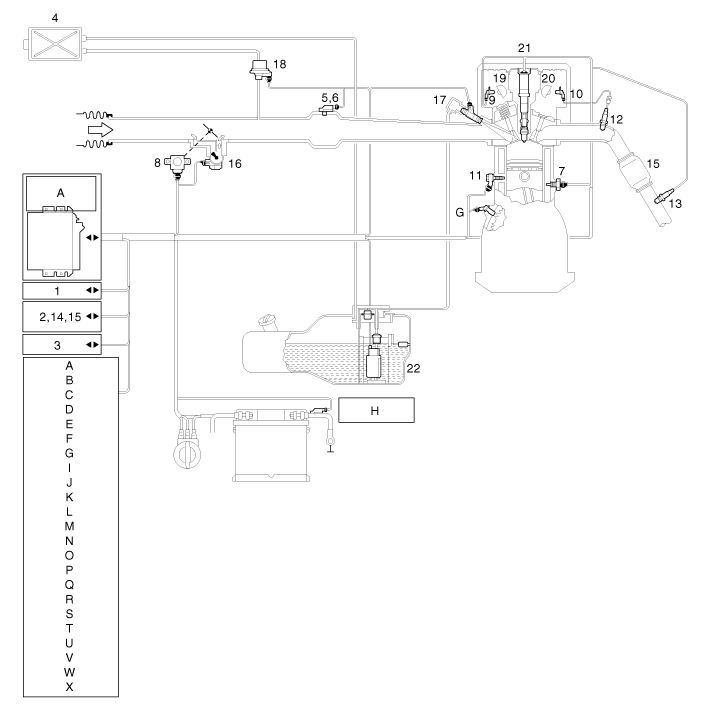

1. C-CAN High/Low 2. MIL. Lamp 3. Immobilizer 4. Canister 5. Manifold Absolute Pressure Sensor (MAPS) 6. Intake Air Temperature Sensor (IATS) 7. Engine Coolant Temperature Sensor (ECTS) 8. Throttle Position Sensor (TPS) [integrated into ETC Module] 9. Camshaft Position Sensor (CMPS) [Bank 1 / Intake] 10. Camshaft Position Sensor (CMPS) [Bank 1 / Exhaust] 11. Knock Sensor (KS) 12. Heated Oxygen Sensor (HO2S) [Bank 1 / Sensor 1] 13. Heated Oxygen Sensor (HO2S) [Bank 1 / Sensor 2] 14. Accelerator Position Sensor (APS) 15. A/C Pressure Transducer (APT) 16. ETC Motor [integrated into ETC Module] 17. Injector 18. Purge Control Solenoid Valve (PCSV) 19. CVVT Oil Control Valve (OCV) [Bank 1 / Intake] 20. CVVT Oil Control Valve (OCV) [Bank 1 / Exhaust] 21. Ignition Coil 22. Fuel pump Motor | A. Cluster B. Clutch switch C. Neutral switch D. Brake booster vacuum pressure sensor (BBVPS) E. Alternator F. Start motor G. Crankshaft Position Sensor (CKPS) H. Battery sensor I. Hood switch J. Door switch (Driver's) K. Seat belt switch (Driver's) L. DC/DC converter M. Audio N. A/C Control module O. A/C Switch P. Defroster switch Q. A/C Compressor R. Blower motor S. Blower relay T. Evaporator sensor U. Ambient temperature sensor V. Blower resistor [Manual A/C] W. FET (Field Effect Transistor) [Auto A/C] X. Catalytic convertor |
The ISG system is strongly networked with the power management. In the event of battery replacement, disconnection of the battery terminal or after changing the engine management system, the reference data regarding the battery charge state and battery condition can be lost.
They are only available again a closed-circuit current measurement of approximate 4 hours in which the vehicle may not be wakened. In this time, the ISG system is inactive.